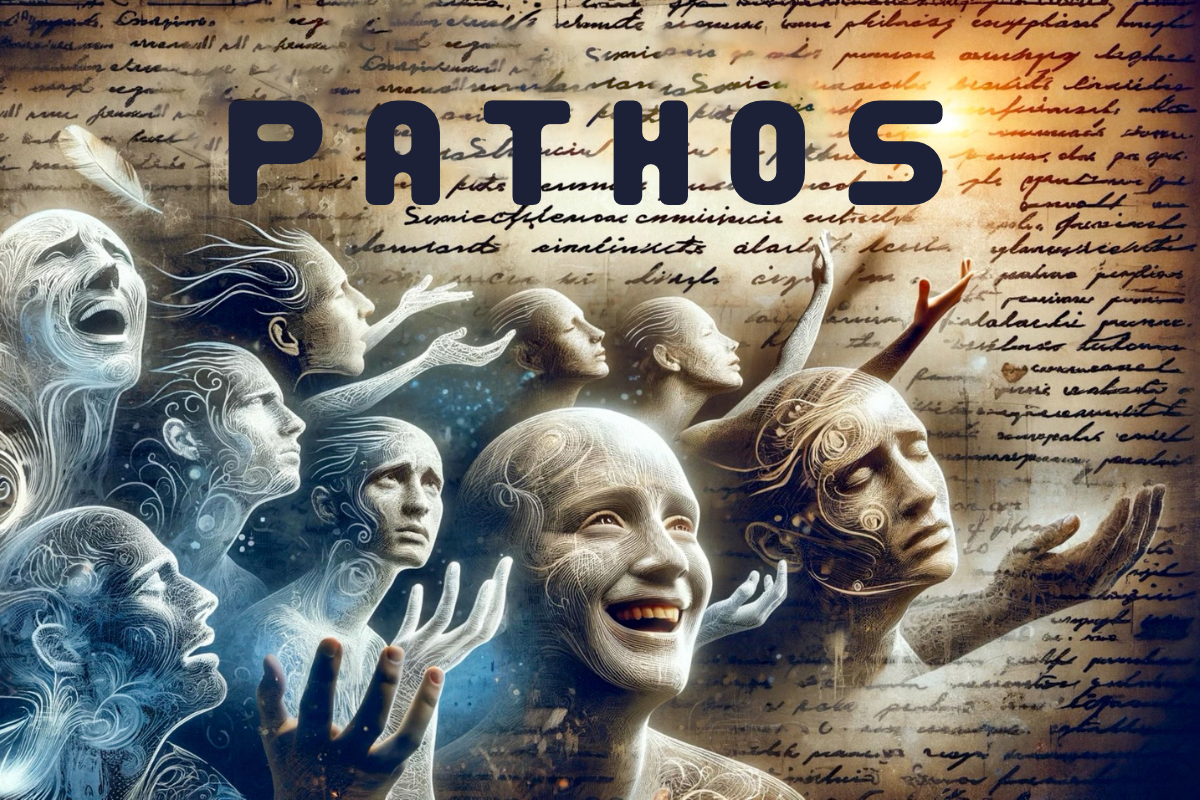Pathos is the use of emotion to persuade or influence an audience.

Pathos refers to the emotional appeal used in communication, particularly in rhetoric and literature, to persuade or affect an audience’s emotions. It is one of the three modes of persuasion identified by Aristotle, alongside ethos (appeal to ethics) and logos (appeal to logic).
Feeling the Story: The Role of Pathos in Creative Writing
Pathos is a powerful tool in creative writing that taps into our emotions. Think of a story that left you in tears or a novel that had you on the edge of your seat with suspense. That’s pathos at work. Writers use it to make their stories resonate, creating a strong emotional connection. It’s like when a friend shares a heartfelt story, and you feel their joy or pain. That connection is what makes the story stick with us long after we’ve turned the last page.
In crafting a narrative, authors sprinkle pathos throughout to breathe life into their characters and plots. They might describe a character’s heartbreaking loss or a joyful reunion with such vivid detail that we can’t help but feel those emotions ourselves. It’s not just about sad or happy moments; it’s about making every emotion in the story feel real. This emotional depth adds layers to the reading experience, making the tale more memorable and impactful.
But how do writers achieve this? They pay close attention to the details: the setting, the characters’ expressions, and the words they choose. A well-described setting can create a mood that primes us for the emotional journey ahead. Characters become real people with relatable feelings and experiences. And the choice of words can make the difference between a flat description and one that bursts with emotion. Ultimately, pathos turns a good story into an unforgettable one, pulling us into the narrative and making us care about what happens next.
Example of Pathos in Literature
Pathos in literature pulls readers into the story by tapping into their emotions, making characters and events feel deeply personal and impactful.
Example 1:
To Kill a Mockingbird
by Harper Lee
A famous example of pathos in literature is the novel To Kill a Mockingbird by Harper Lee. The story evokes strong emotions through its portrayal of racial injustice and innocence lost in the American South. The character of Atticus Finch, defending an innocent black man accused of raping a white woman, and the experiences of his children, Scout and Jem, expose readers to the harsh realities of prejudice and empathy. The emotional depth and moral complexity of the story engage readers on a deeply personal level, making it a powerful example of pathos in literature.
Example 2:
Anne of Green Gables
by Lucy Maud Montgomery
Another example of pathos in literature is the novel Anne of Green Gables by Lucy Maud Montgomery. The story of Anne Shirley, an imaginative and spirited orphan girl who is mistakenly sent to live with siblings Marilla and Matthew Cuthbert in Prince Edward Island, deeply engages readers’ emotions. Anne’s experiences, from her struggles and triumphs to her growth and relationships, resonate with themes of belonging, resilience, and the search for identity, evoking a strong emotional response from readers and making it a beloved classic in Canadian literature.
Pathos: The Heart of Great Literature
Pathos is a vital element in creative writing that stirs the emotions of the reader, creating a deep, empathetic connection to the narrative. Whether through the innocent eyes of Anne in “Anne of Green Gables” or the moral struggles in “To Kill a Mockingbird,” pathos enriches the reading experience by adding emotional depth and making the story more relatable and memorable. It’s this emotional resonance that truly defines the power of a story, proving that at the heart of great literature lies the ability to feel deeply and connect profoundly.
Meanwhile, at Dreamers…
Dreamers Writing Prompt Generator

Experience the power of simplicity with our unique writing prompt generator. Designed for writers who crave spontaneity and surprise, our tool delivers one meticulously crafted prompt at a time.
Top 25 Most Popular Manga Right Now

If you’re searching for the most popular Manga right now, this top 25 list is the ideal starting point, whether a beginner or enthusiast.